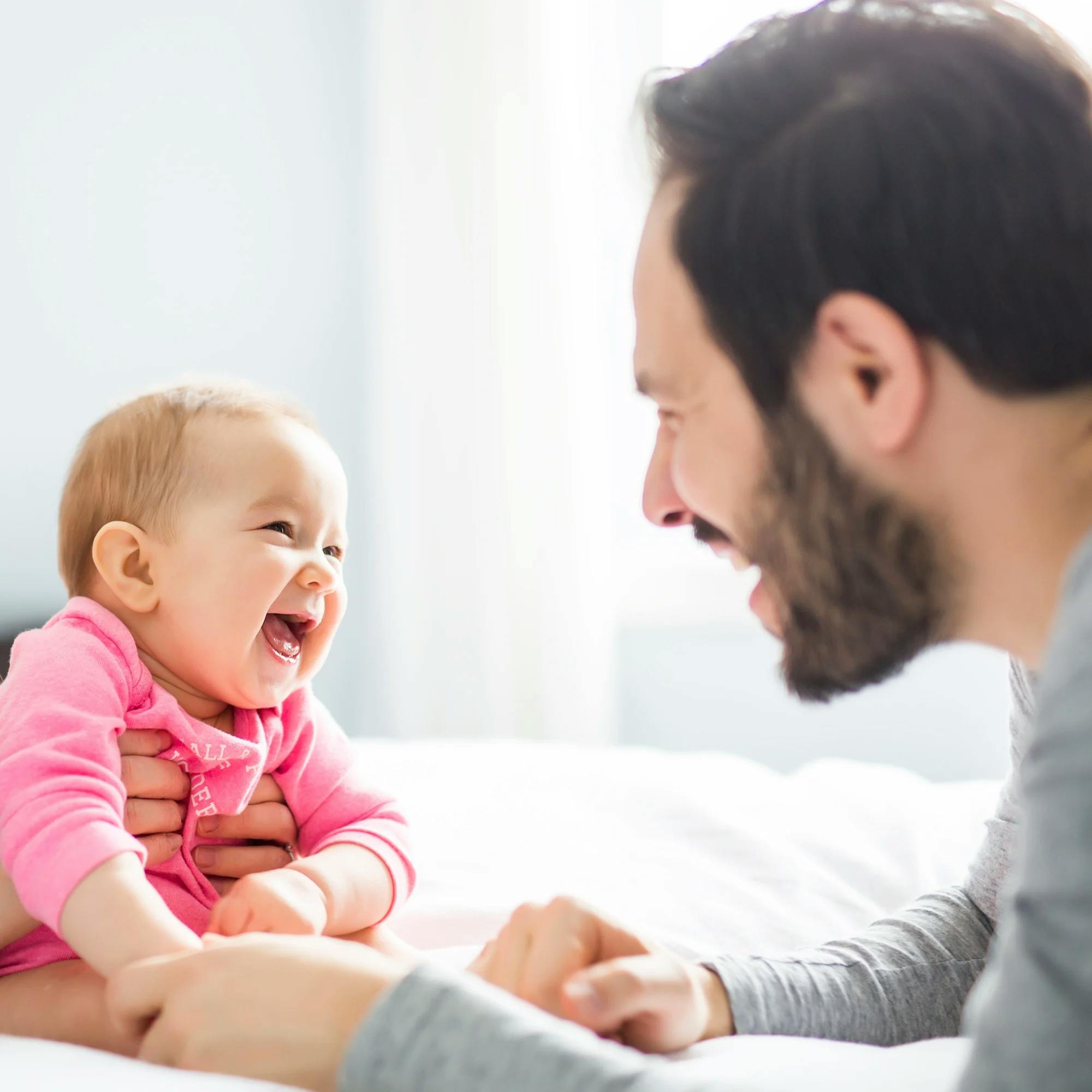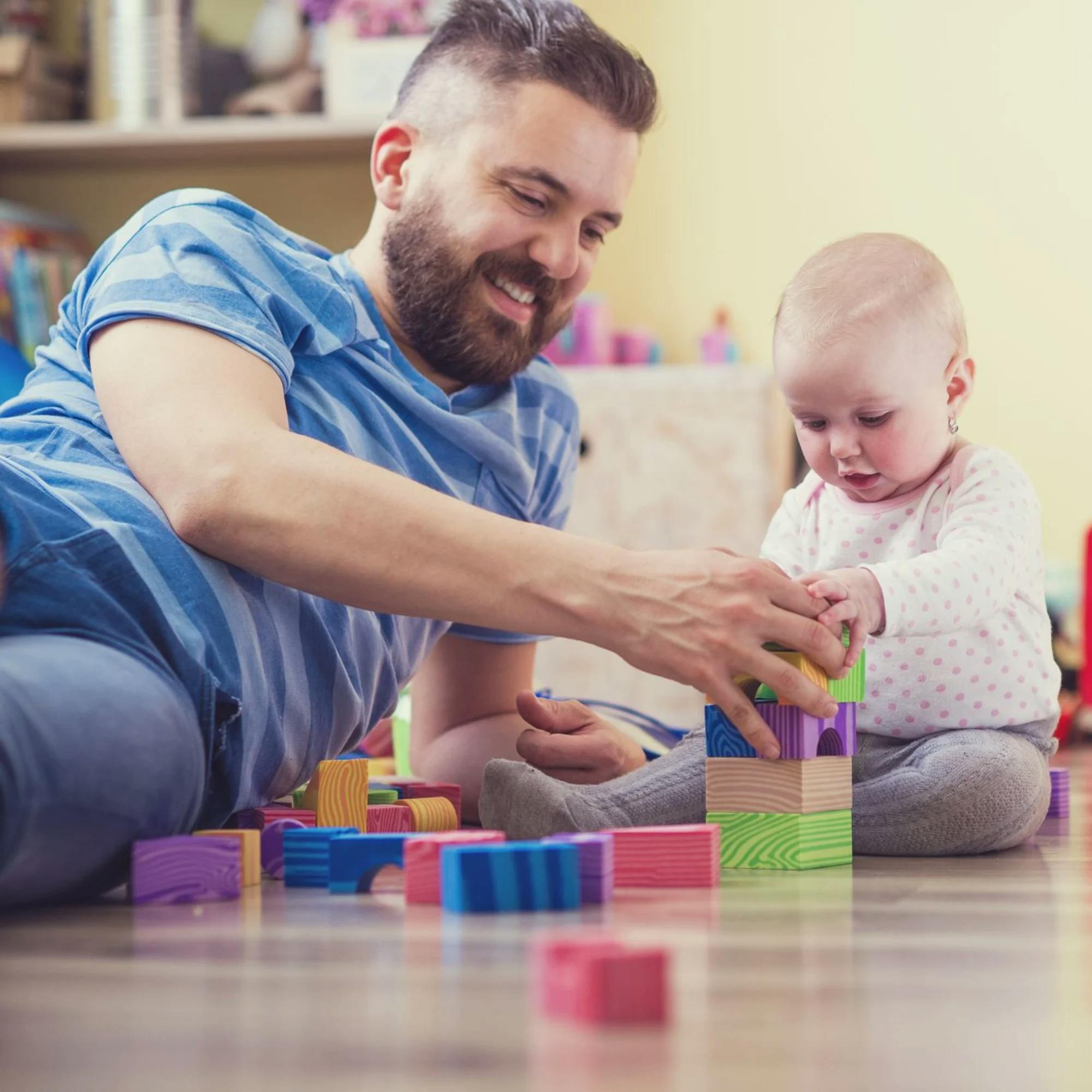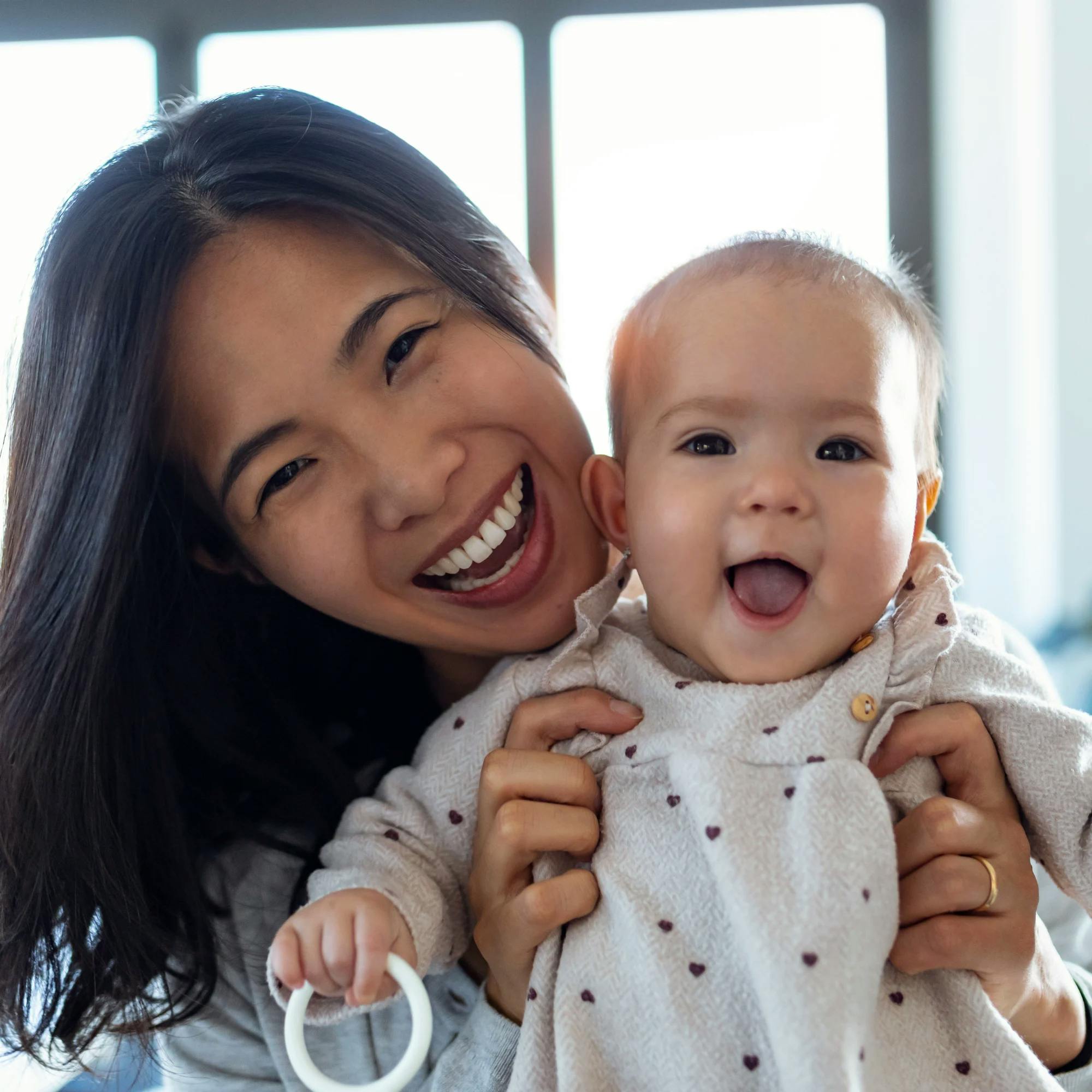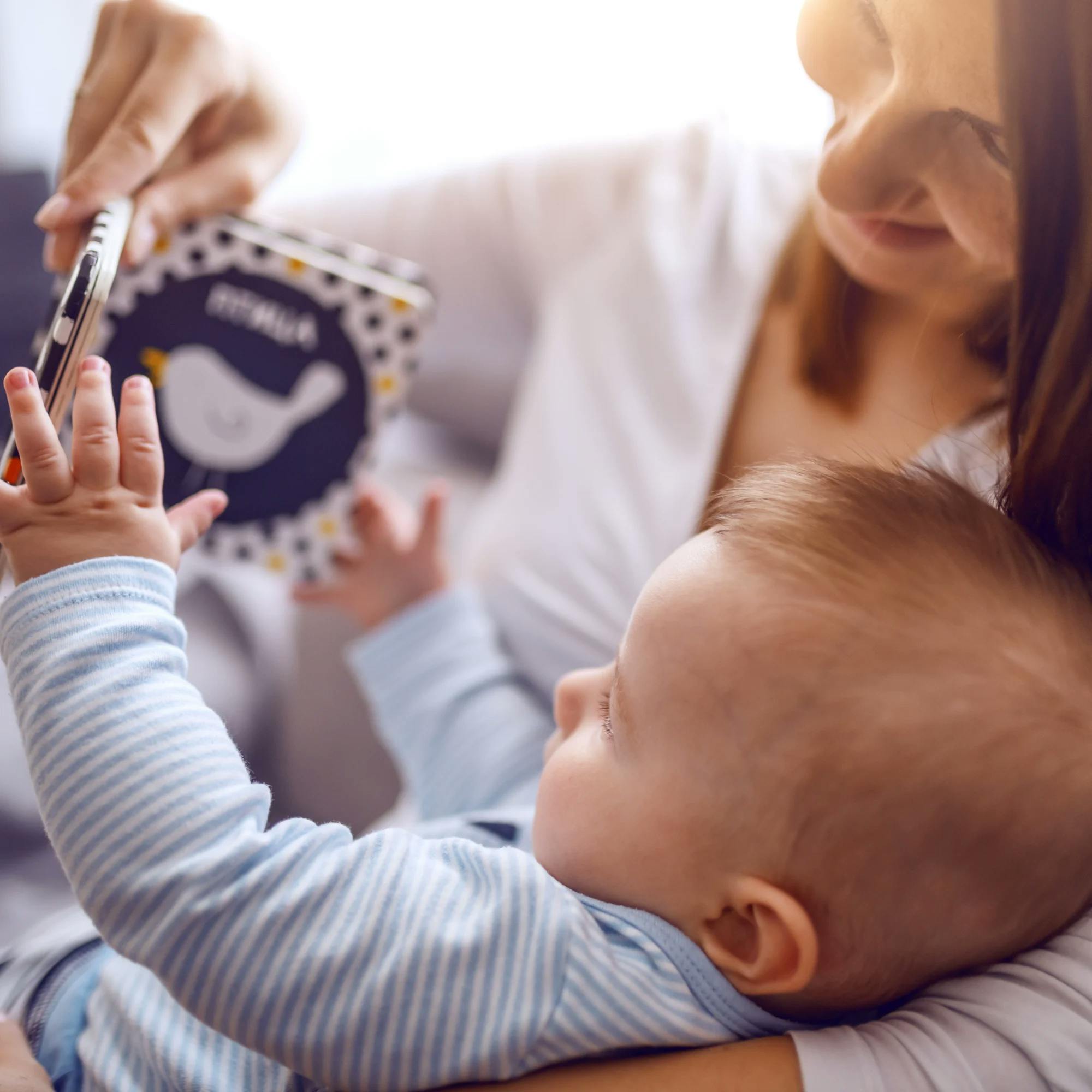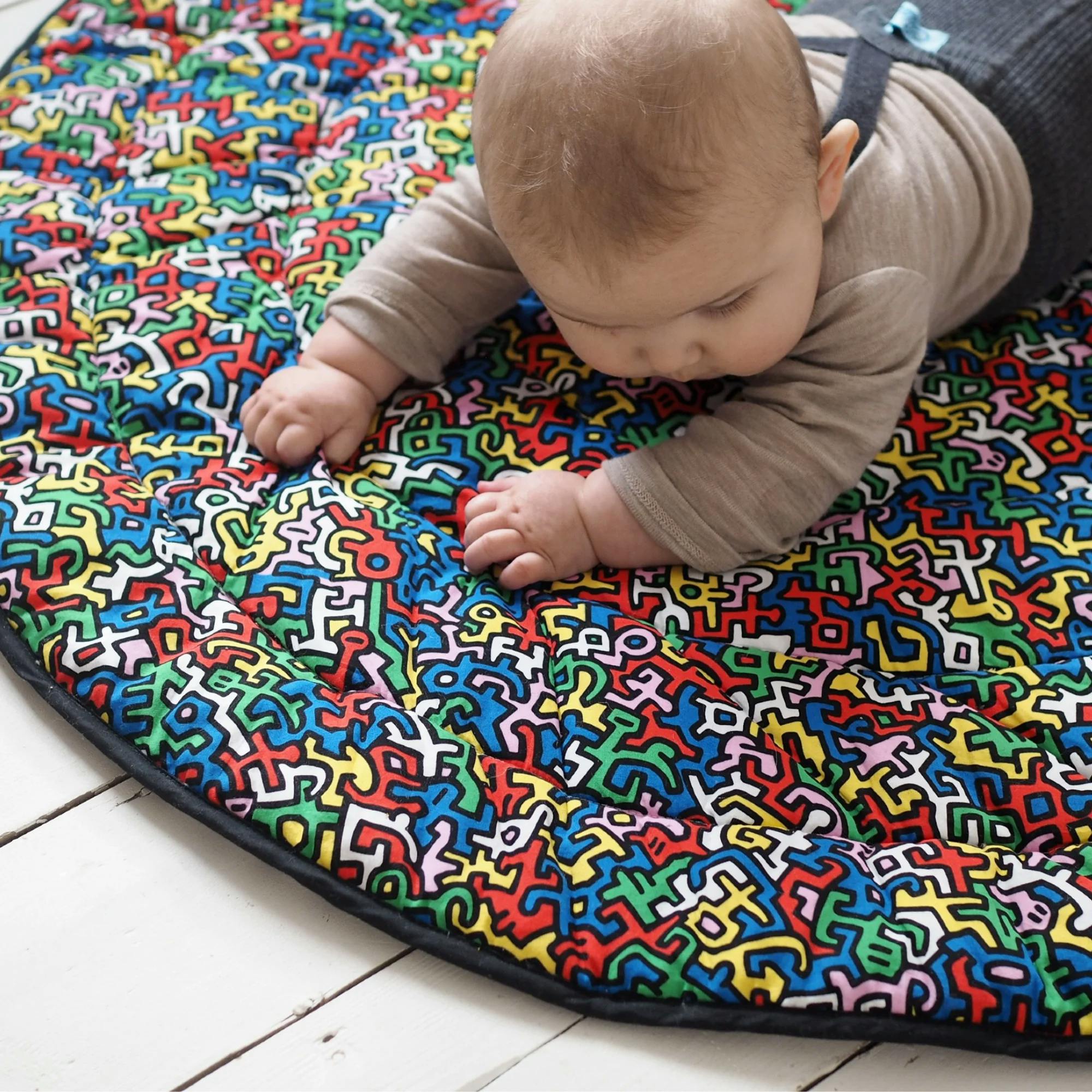Baby on the way? Whether you’re creating a baby registry or you’re already a seasoned parent, you’re likely shopping for baby and toddler gear. There’s a lot to choose from, so it’s helpful to get some tips from the experts! Speech-language pathologists who work with young children are experts in early childhood development. This includes speech and language, of course, but also feeding and swallowing, play skills, and overall communication development. The toys, books, teethers, and sippy cups you choose–as well as how you use them to interact with your baby–can have a big impact on their growth and development.
So take a look at this speech therapist-approved guide to must-have baby registry items. There may be something here you hadn’t thought of!

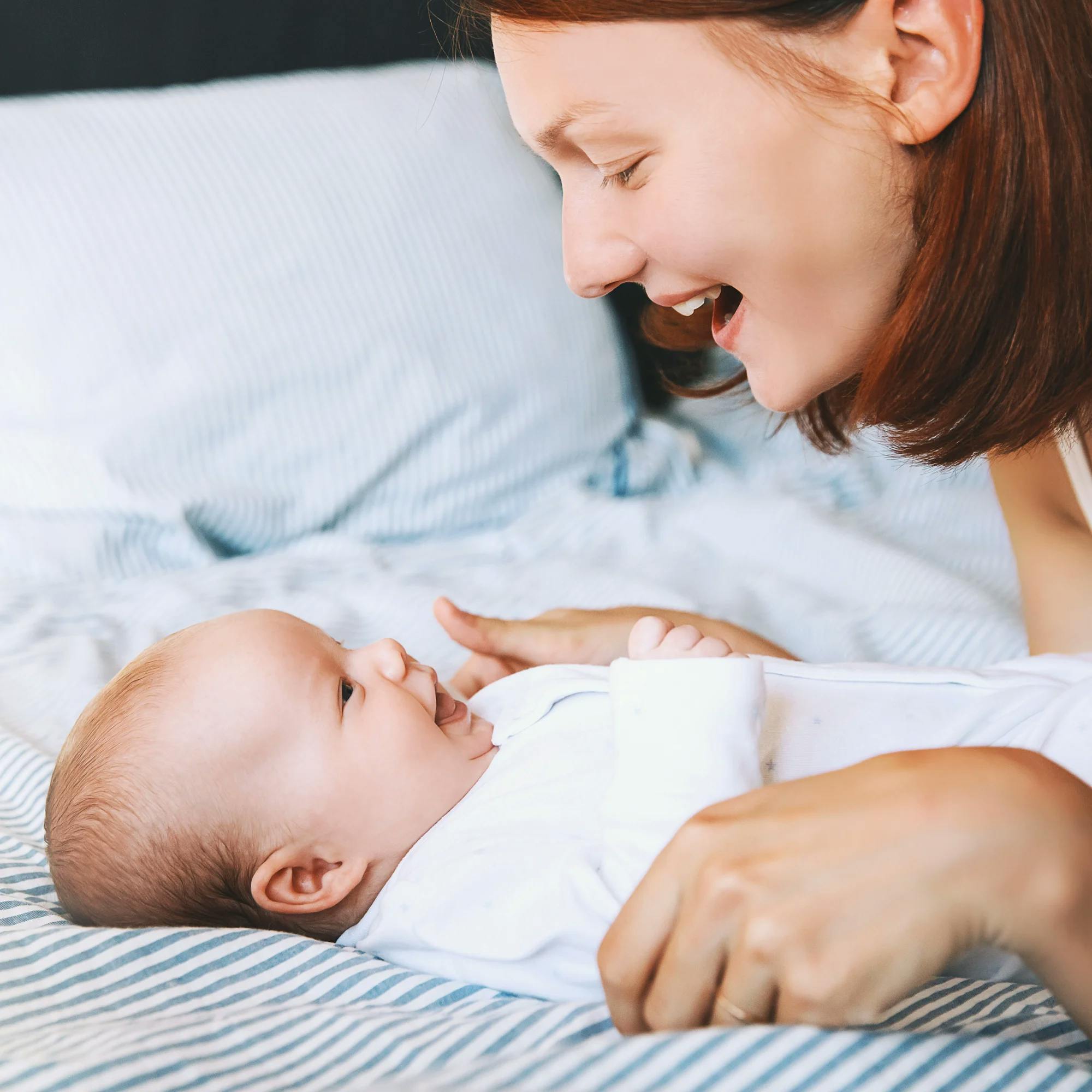
Recommended pacifiers
Most babies will want to take a pacifier at some point in their first year. These pacifiers have an orthodontic design that’s compatible with a baby’s oral growth. They also adhere to guidelines from the American Academy of Pediatrics.
The pacifiers above are for ages 0-3 months. You can also purchase this pacifier in a bigger size to have as your baby grows.

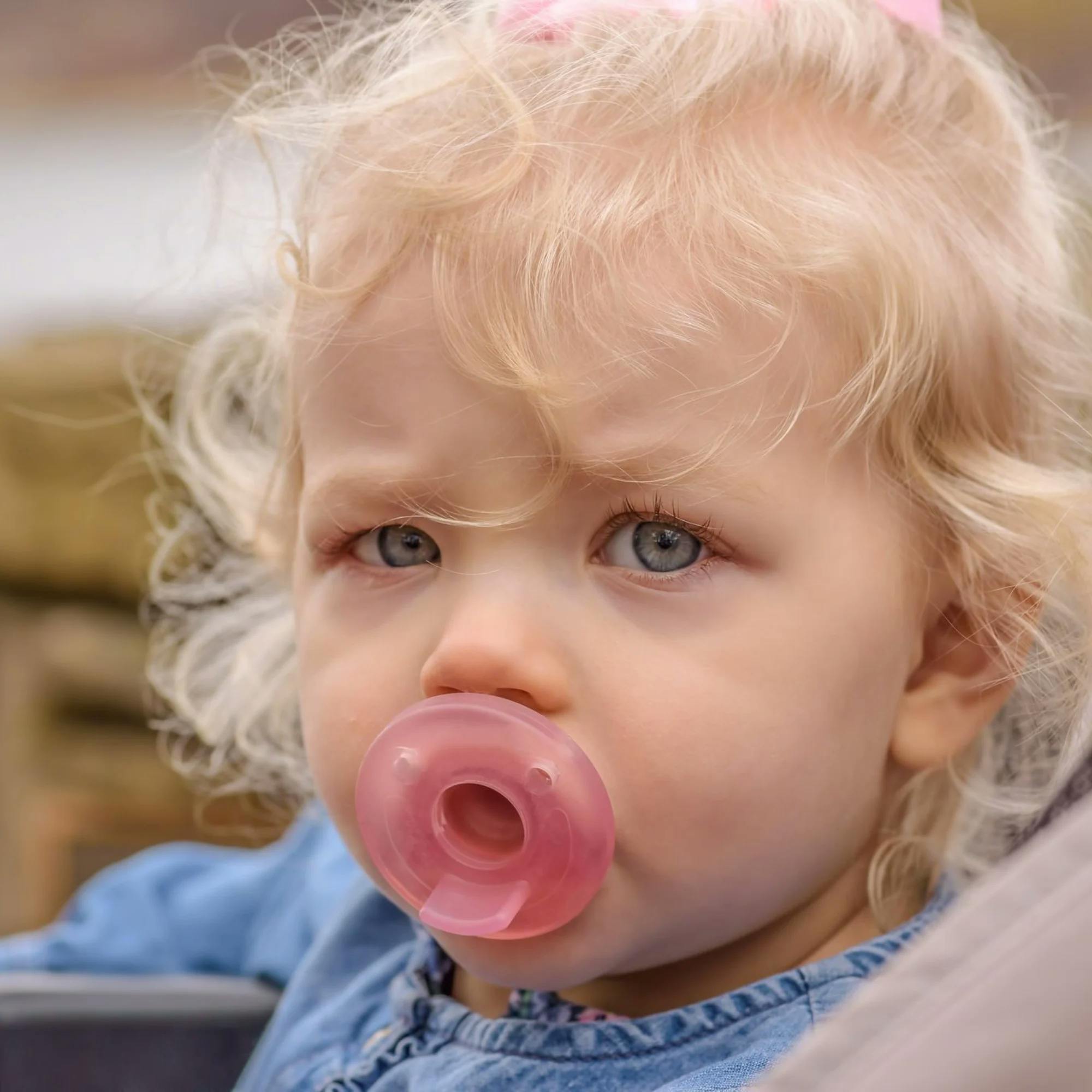
Top baby teethers
Teethers are vital to keep your little one happy as their teeth start coming in. Different textures of teethers can also help your child get used to different sensations in their mouth, which is a great preparation before starting foods! Our feeding therapists recommend these teethers:
Bonus tip: During teething–and your baby’s first year in general–there’s going to be lots of drool and a good amount of spit-up. These baby bandana bibs are perfect for keeping your baby clean!
Best books for your child’s speech and language development
Be sure to include books on your baby registry. Books are incredible for supporting your baby’s communication development. You can start reading to your baby from day one to create a reading routine and kickstart their language growth.
Here are some of our speech therapists’ favorite books for babies and toddlers:
Wishy Washy: This book is actually written by a speech therapist! Repeated words and sounds help children learn new vocabulary, and the beautiful illustrations hold their attention (and yours).
Baby Touch and Feel books: Touch and feel books are always a hit with little ones. Read the book and show your baby how they can feel the items on the page. An engaging activity like this may help your baby pay more attention to the book and absorb what you’re saying.
Brown Bear, Brown Bear, What Do You See?: This book is a classic. If you don’t have your old copy laying around somewhere, it’s worth getting a new one for your baby! This book repeats itself with the familiar phrases “What do you see?” and “I see a ______ looking at me!” Hearing repetition helps babies learn new words to add to their receptive vocabulary.
Crinkle books: Check out these adorable crinkle book versions of The Very Hungry Caterpillar and Goodnight Moon. Not only will you be reading to your baby, but they can touch the book, crinkle it up, listen to the sounds, and even chew on the attached teether when you’re all done! Multi-purpose products are a big win for parents and caregivers.
Learn more about reading aloud to promote your child's language growth in this Instagram post.

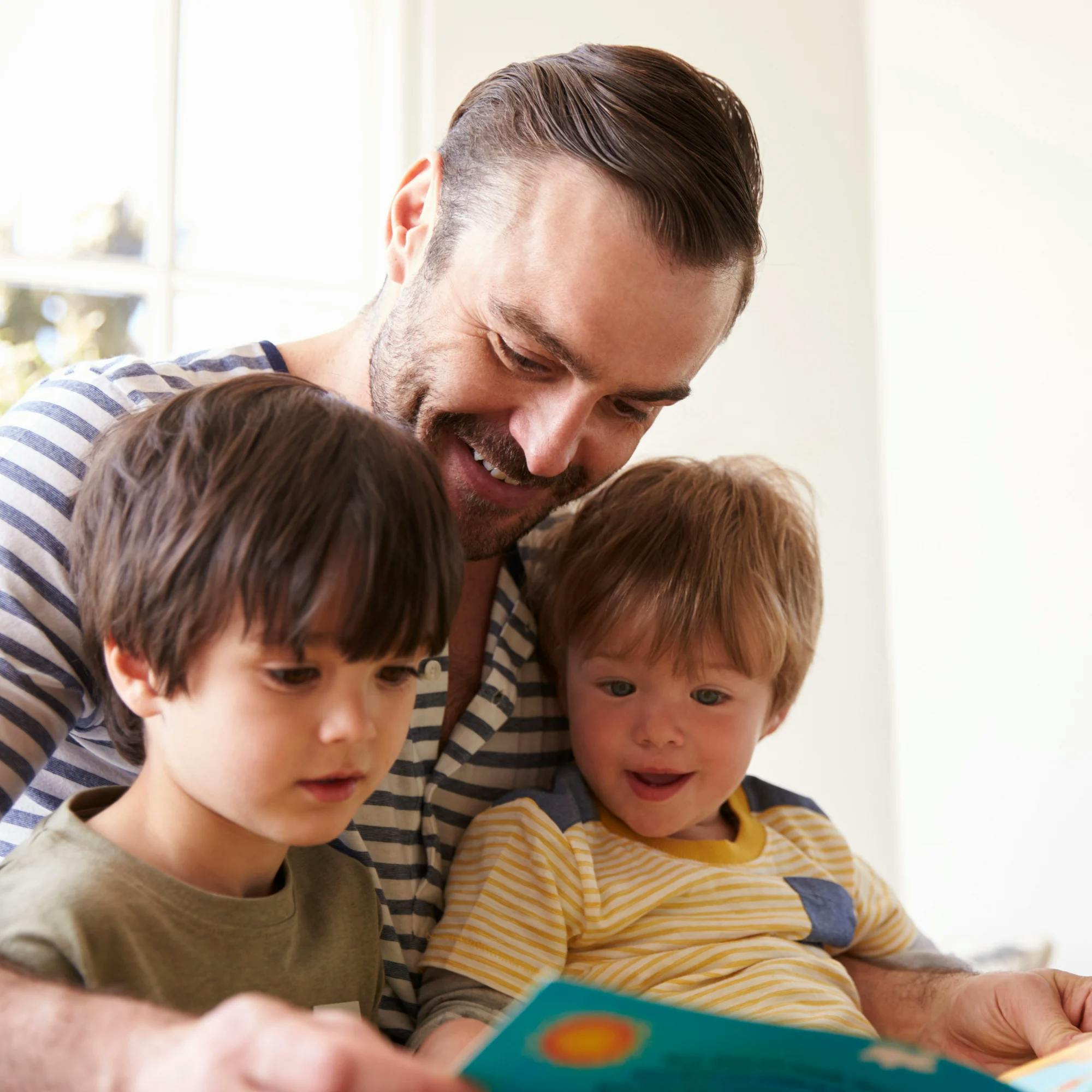
Toys that promote speech and language development
As any parent knows, the world of toys is a pretty vast one. Here are some recommendations from our speech therapists for toys that can help your child’s development. But whether the toy is a spoon from the kitchen drawer or the latest colorful gadget, what matters most is the way you use it with your child. Playtime offers lots of opportunities to help babies and toddlers learn how to communicate.

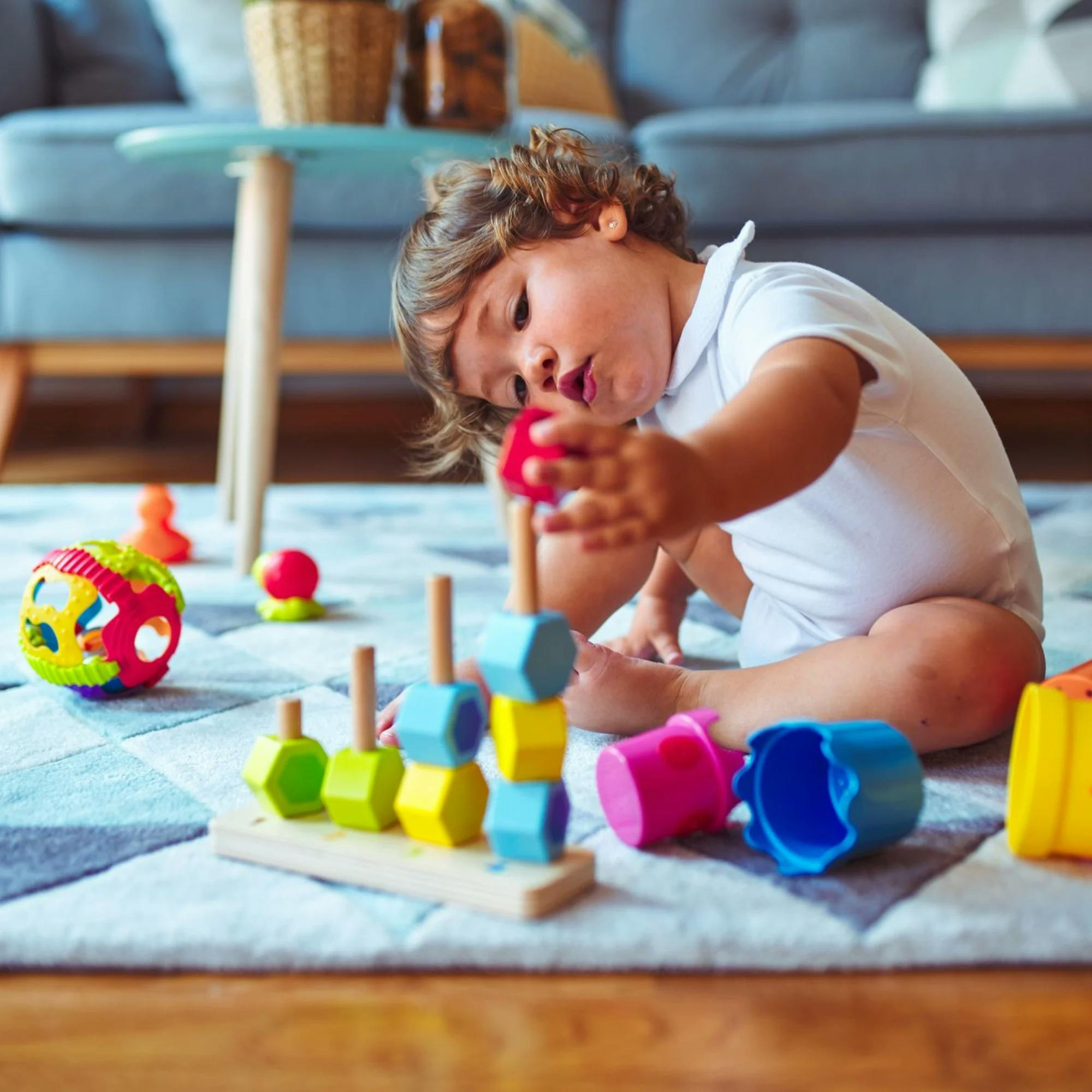
Toys for tummy time
The importance of tummy time can’t be stressed enough. It helps babies increase their strength and coordination during their early days, and minimizes the amount of time they spend lying on the back of their head. Babies' heads are very soft and can be prone to flat spots if the baby is not off their head enough.
To make tummy time more fun, try this mirror! They’ll enjoy watching themselves and it will help motivate them as they work hard during tummy time. Plus, as they grow older, babies learn to move their mouth, lips, and tongue and imitate and interpret facial expressions. What better way to get them familiar with faces than by showing them their own!
Babies love smiling at themselves, too. Smiling is actually a communication milestone to watch for as your baby develops (a pretty cute milestone, at that!).

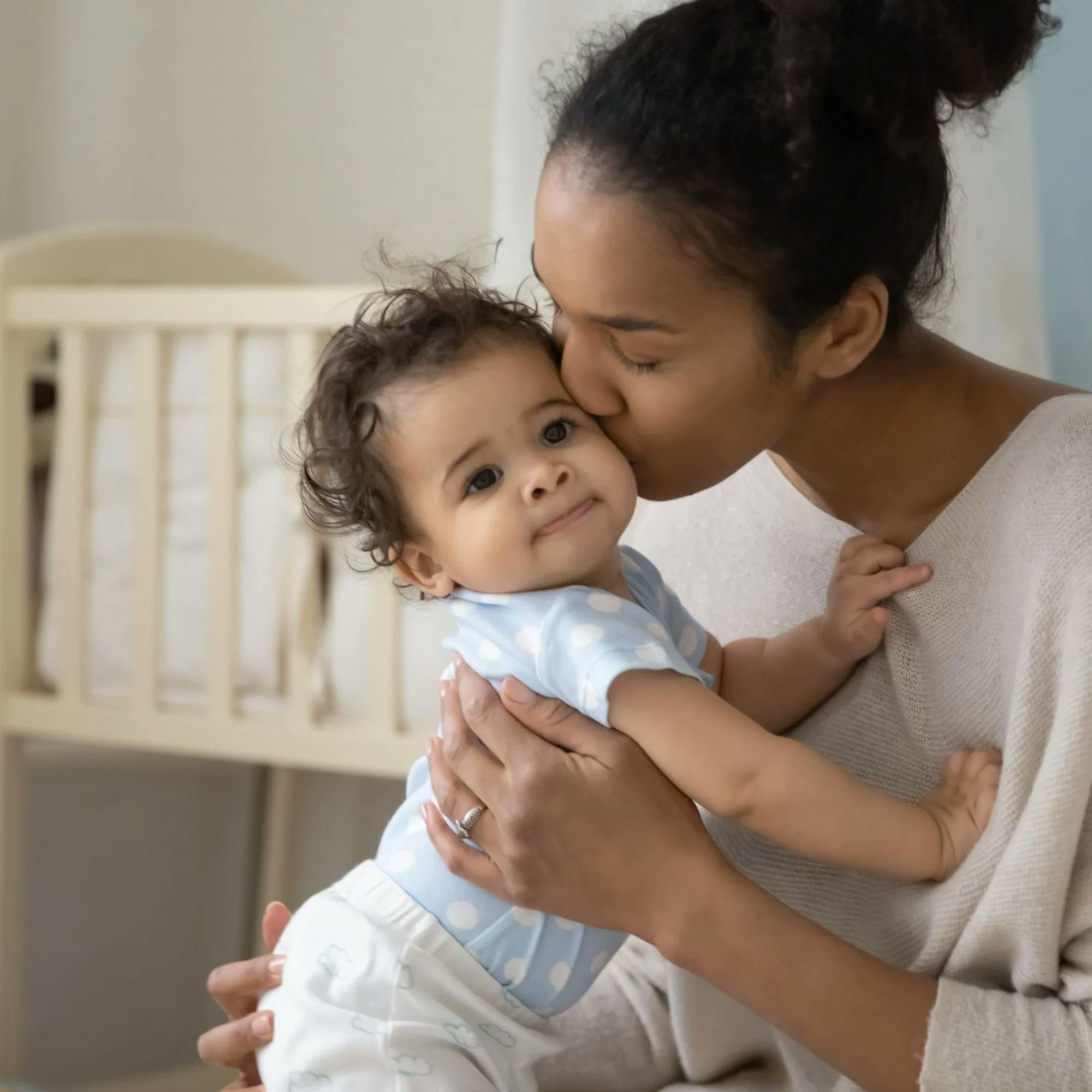
Top toys to promote language
Talking to your child frequently, even if they can’t answer you yet, helps them grow their language abilities. This adorable soft fish toy by Melissa & Doug offers lots of playtime benefits. The fish has different fabric textures and pictures under the scales, which encourages tactile exploration and is good for grasping and finger strength. But in addition, the toy is easy to talk about with your child. You can talk about the “soft scales,” discuss what a fish does in the water, or name the colors you see on the toy. Talking to your baby while you play with them helps them have fun while learning!

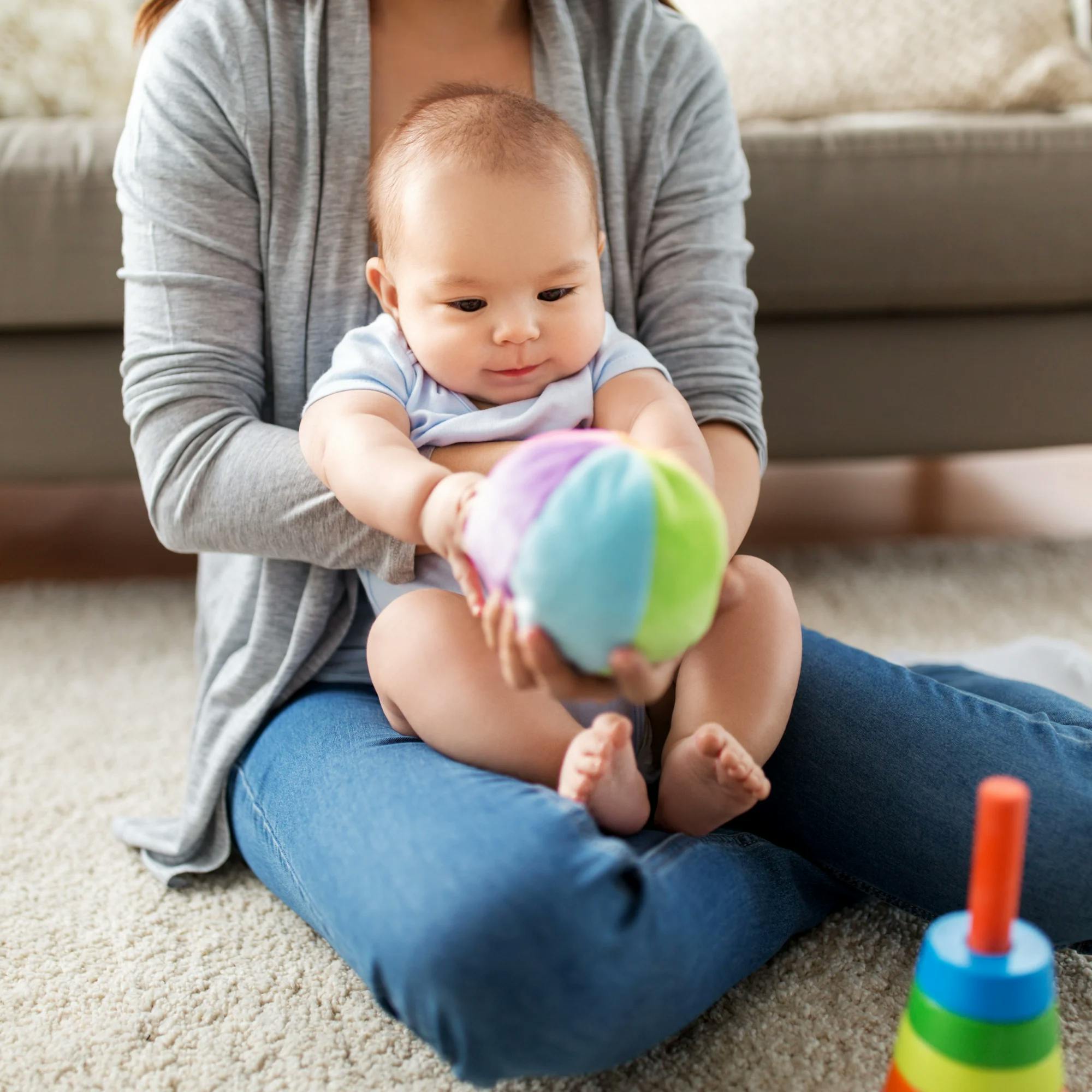
Cause-and-effect toys
Toys that require a button to be pushed, a switch to be flipped, or a squeaker to be squeezed can be referred to as “cause-and-effect toys.” Playing with toys like these helps babies understand the cause-and-effect concept: “If I push a button, the toy lights up” or “If I flip the switch, the toy pops up.”
These concepts are important because they relate to communication. Communication is essentially a cause-and-effect relationship. Think about it like this: When we tell someone what we need, we will likely get it in return. That’s a cause-and-effect relationship.
Communication is essentially a cause-and-effect relationship.
Speech therapists recommend playing with cause-and-effect toys with your little one. They’ll be learning the foundations for purposeful communication, such as signing or gesturing to request what they need, then eventually using words to tell you what they want. Here are some cause-and-effect toys to add to your baby registry:
Sophie the Giraffe (This is a teether and a squeaky toy in one!)
Bonus tip: If you’re looking for a toy that can aid in lots of different developmental skills, this is it! Check out this colorful spinning toy. Therapists love it because it helps with developing fine motor skills, increasing attention span, teaching cause-and-effect, and helping with hand-eye coordination.
Toys for pretend play
As your baby gets older, don’t forget that bath time is an excellent time for play. These little animal toys for bath time are great for pretend play, teaching animal sounds and names, and practicing early communication interactions, like laughing together and talking or babbling back and forth.
Recommended sippy cups, highchairs, and other feeding items
Many people don’t know that feeding therapy is part of the scope of practice of speech therapists. That’s why we are so passionate about parents having the best items to support healthy feeding development!
The GOOtensils spoon set is a great addition to your baby registry. The handles are designed to easily fit in a baby’s hand so they can learn how to feed themselves properly. Babies can easily dip the spoon into different foods and bring it to their mouth.
When helping your baby explore new foods, it’s OK for them to get messy. In fact, it’s encouraged!
When helping your little one explore new foods, it’s totally OK for them to get messy. In fact, it’s encouraged! It might be hard to not constantly wipe your little one’s face and hands, but it’s good for your baby to let them make a mess. Your baby will get used to different textures of food and better tolerate what those foods feel like. Bonus tip: To help your floors during these extra-fun meals, consider a mat to keep underneath the high chair.
When you’re shopping for a highchair, look for one with adjustable straps and an adjustable footrest. It’s important for your baby to be supported through their trunk and to have a place to rest their feet. This helps them stabilize, and it supports appropriate oral motor movement as they learn to eat. You can look for any highchair with these features, but here are two to consider.

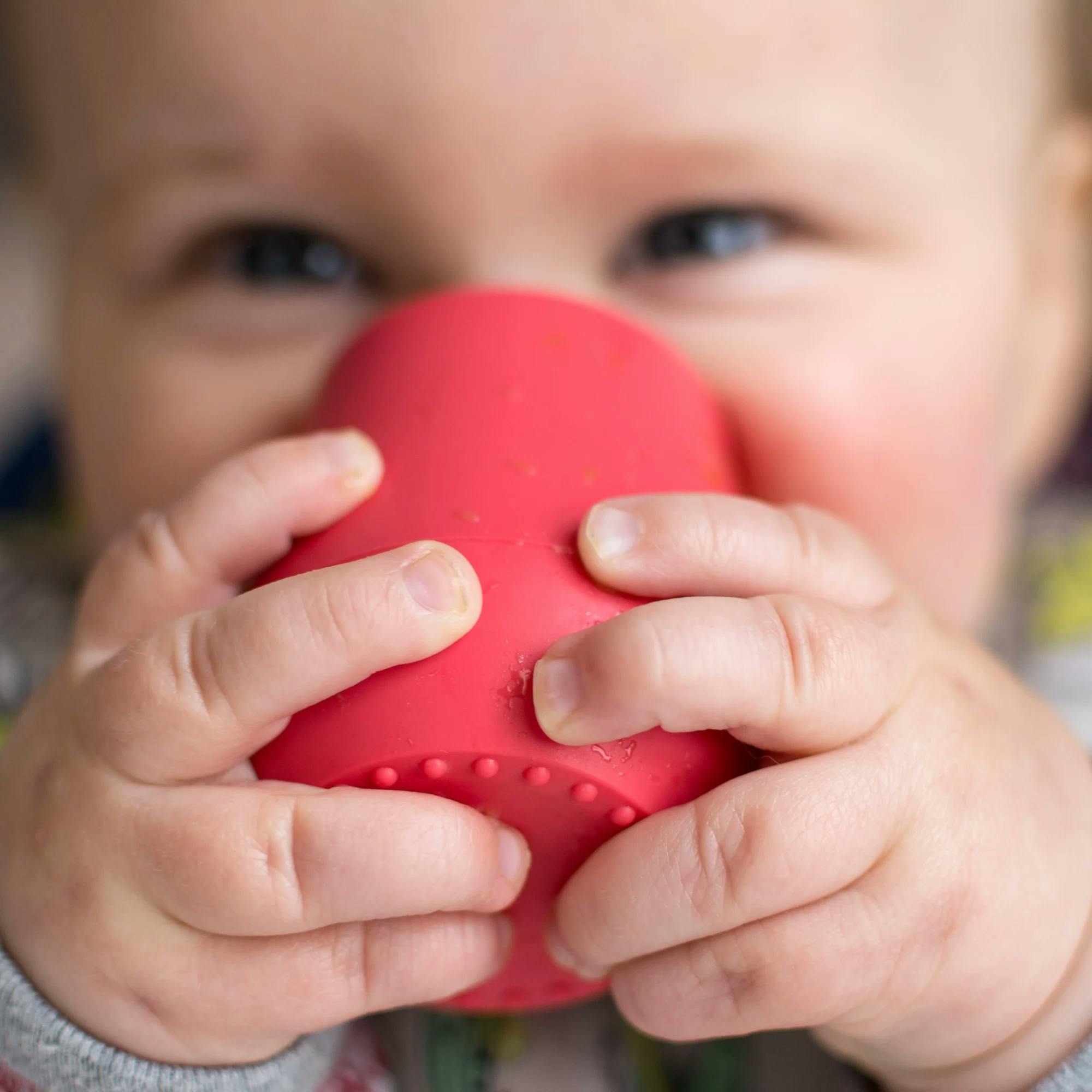
What about sippy cups? As your baby grows, they will begin transitioning from the bottle to a cup. Be sure to talk with your pediatrician about their specific recommendations for your child. They can guide you on what type of cup to try first, and whether your baby should try an open cup or a straw cup. Just because a cup is marketed for a certain age does not mean your child is ready to use it. Work with your pediatrician to make that decision.
Here are some recommended cup options, along with the ages they are marketed for:
Tiny silicone training cup with handles (open cup, age 6+ months)
ez pz tiny cup (open cup, age 4+ months)
Honeybear cup (straw drinking, age 4+ months
ezPZ straw cup (straw drinking, age 12+ months)
For information on cup introduction, check out this helpful article from Solid Starts.
Here at Expressable, we wish you the very best of luck as you enter an exciting new phase of life. When you add items like these to your registry, you’ll be supporting your little one throughout their first year and beyond. But remember, how you use them to interact with your baby will have the biggest benefit on their growth and development.
How Expressable Can Help
Concerned your child isn't reaching age-expected milestones? Looking for communication support from a professional? Expressable is a national online speech therapy practice serving children and adults. We treat all major areas of communication and feeding, offer flexible hours including evenings and weekends, and accept most major health insurance plans. We’re proud to have earned more than 3,000 5-star reviews from our clients (4.9/5 average).
Our therapy model is centered on parent and caregiver involvement. Research proves that empowering caregivers to participate in their loved one’s therapy leads to better outcomes. That’s why we combine live, 1-on-1 speech therapy with personalized education and home practice activities for faster progress.
Communication is more than words. It’s how we share how we feel and show who we are. We’re here to help you or your child do just that.
 Abby Barnes, M.S., CCC-SLP
Abby Barnes, M.S., CCC-SLP